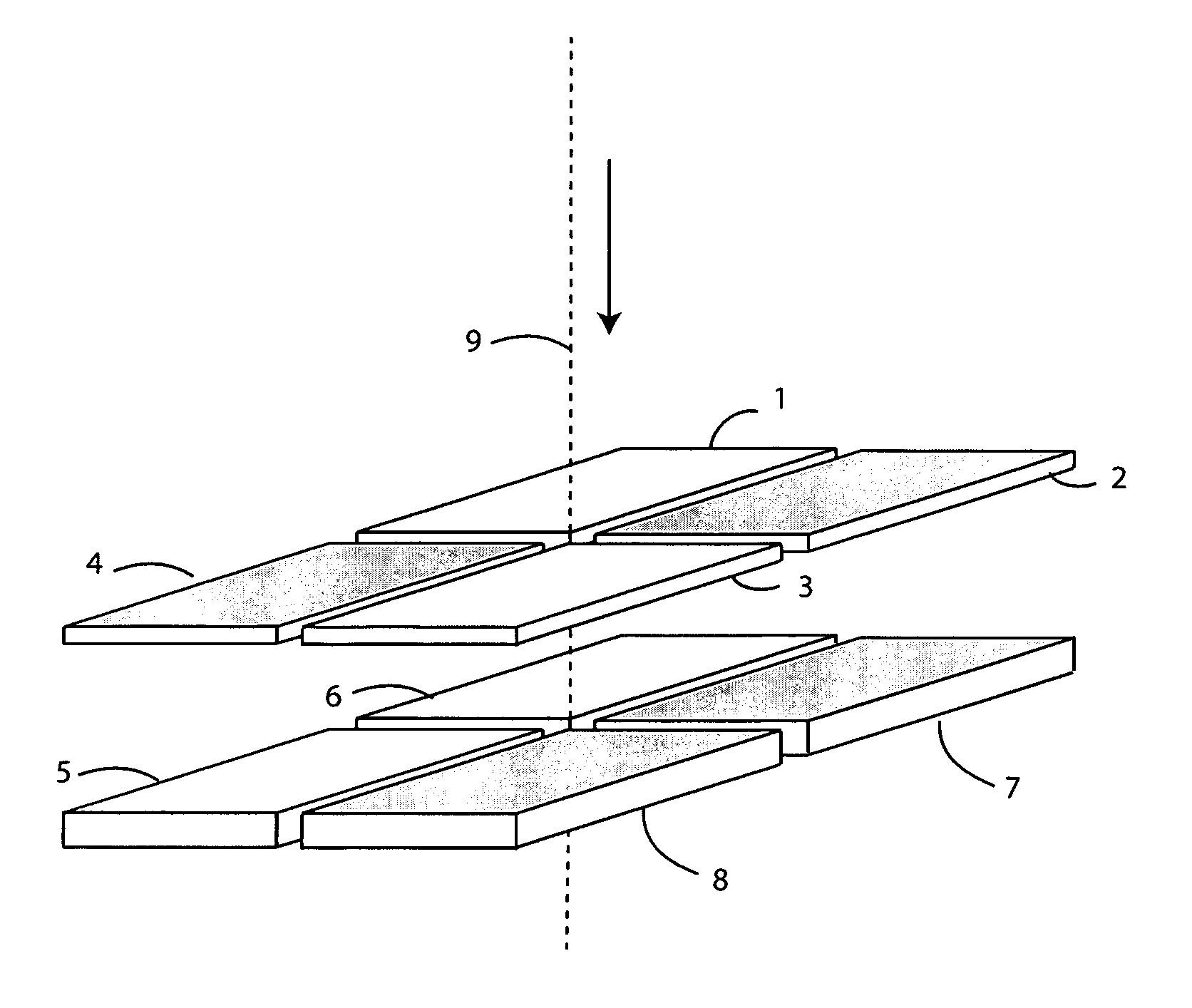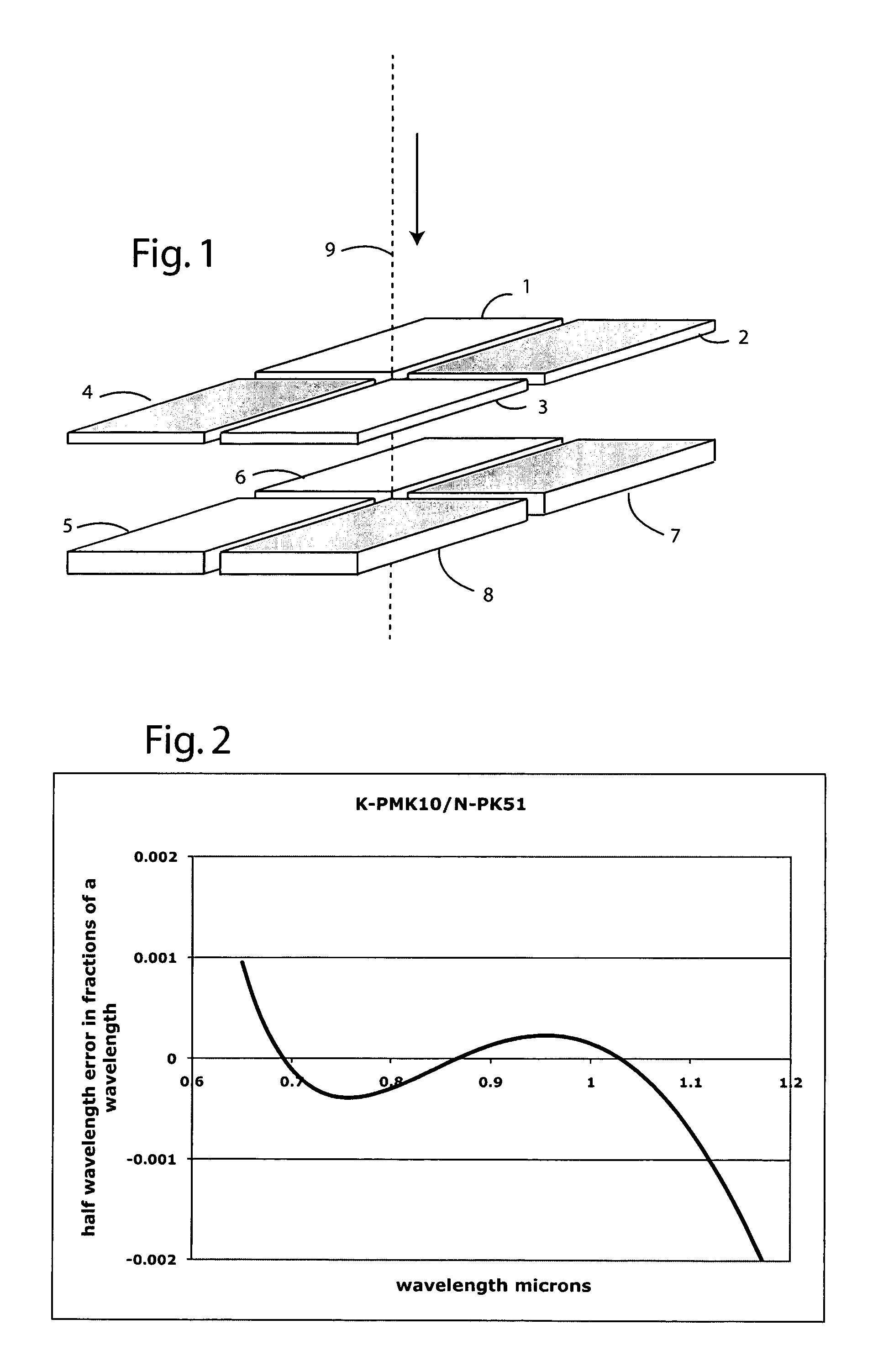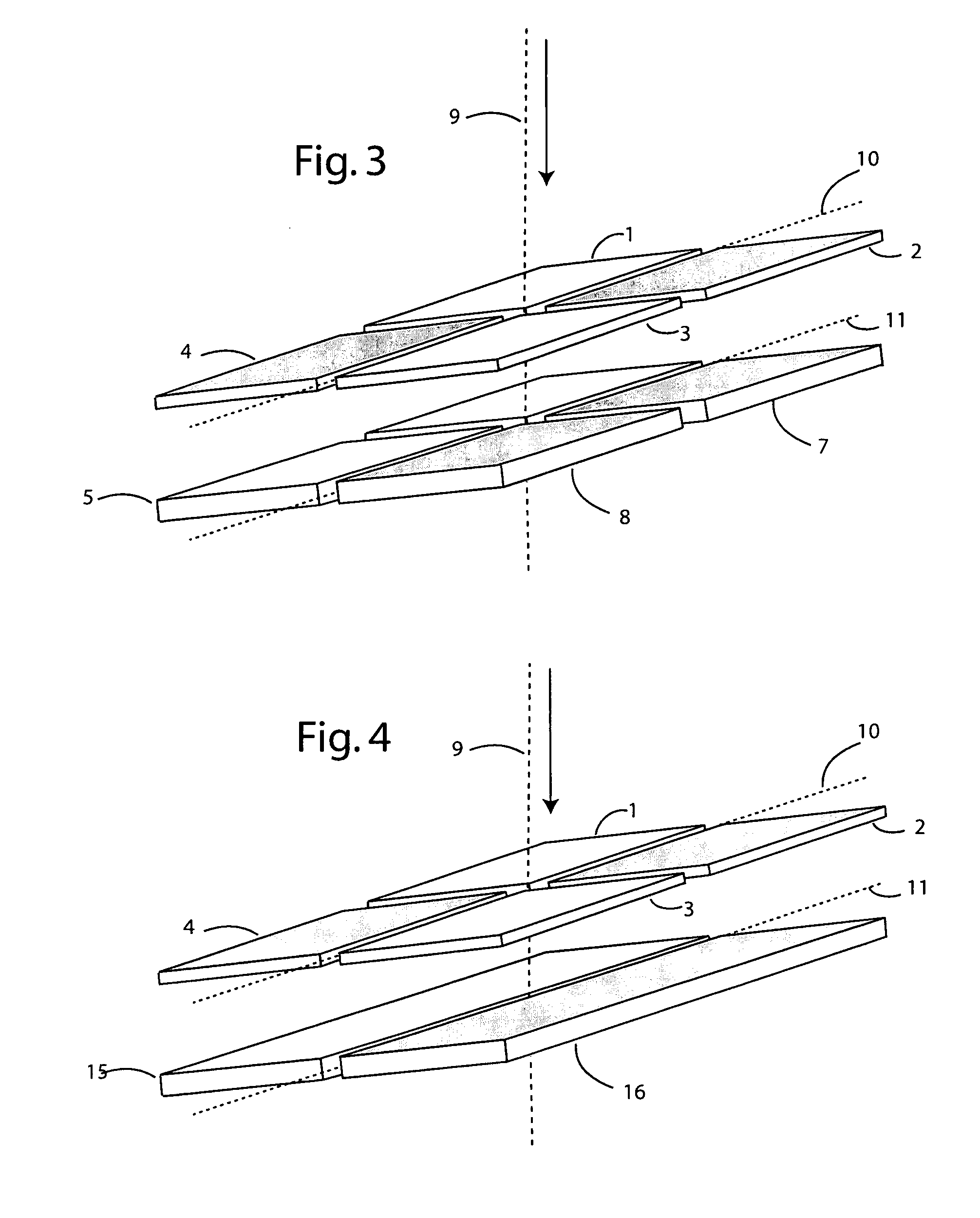Forming light beams and patterns with zero intensity central points
a technology of central points and light beams, applied in the field of optical devices, can solve the problems of spurious reflection, insufficient correction, limited effective resolution,
- Summary
- Abstract
- Description
- Claims
- Application Information
AI Technical Summary
Benefits of technology
Problems solved by technology
Method used
Image
Examples
Embodiment Construction
[0026]FIG. 1 shows an exemplary embodiment of the present invention, in which elements 1 through 8 are glass sheets arranged in a sandwich of two 2×2 matrices, oriented normal to a laser beam 9 shown in the drawing by just its central ray. The direction of light in beam 9 is shown by an arrow. Sheets 1 and 3 are made of Sumita K-PMK10 glass of 82.503 μm in thickness. Sheets 2 and 4 are made of Schott N-PK51 glass of 82.286 μm in thickness. Sheets 5 and 6 are made of Sumita K-PMK10 glass of 165.005 μm in thickness. Sheets 7 and 8 are made of Schott N-PK51 glass of 164.571 μm in thickness.
[0027]As will now be shown, over a large spectral range, light passing successively through sheets 1 and 6 is retarded almost exactly a half wavelength with respect to light passing successively through sheets 3 and 8. FIG. 2 shows a graph of the error as a fraction of a wavelength, plotted against wavelength, for the deviation from half wavelength relative retardation for two beams, one passing thro...
PUM
 Login to View More
Login to View More Abstract
Description
Claims
Application Information
 Login to View More
Login to View More - R&D
- Intellectual Property
- Life Sciences
- Materials
- Tech Scout
- Unparalleled Data Quality
- Higher Quality Content
- 60% Fewer Hallucinations
Browse by: Latest US Patents, China's latest patents, Technical Efficacy Thesaurus, Application Domain, Technology Topic, Popular Technical Reports.
© 2025 PatSnap. All rights reserved.Legal|Privacy policy|Modern Slavery Act Transparency Statement|Sitemap|About US| Contact US: help@patsnap.com



